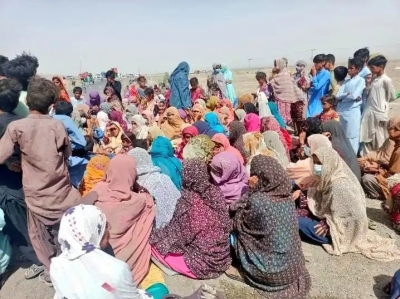ILO ranks Pakistan among worst countries in gender pay gap
By IANS | Updated: August 18, 2025 12:50 IST2025-08-18T12:43:28+5:302025-08-18T12:50:08+5:30
New Delhi, Aug 18 The International Labour Organisation (ILO) has ranked Pakistan among the worst in South Asia ...

ILO ranks Pakistan among worst countries in gender pay gap
New Delhi, Aug 18 The International Labour Organisation (ILO) has ranked Pakistan among the worst in South Asia for wage disparities between men and women, confirming long-standing concerns about structural discrimination in the country’s labour market.
The ILO’s latest 'Global Wage Report' states that women in Pakistan earn an average of 34 per cent less than their male counterparts -- a pay gap significantly wider than the global average and worse than in other countries in the region, including India, Bangladesh, Sri Lanka, and Nepal.
While some countries have shown gradual improvement in narrowing the divide, Pakistan has made no progress with its deeply embedded socio-economic, cultural, and institutional factors continuing to drive the disparity.
A significant portion of female employment in Pakistan is concentrated in the low-wage informal economy that includes agricultural labour, domestic work and home-based manufacturing, with limited protections and virtually no access to formal contracts or benefits.
The ILO report highlights that even within the formal sector, women with comparable educational qualifications and job experience earn less than men across most industries, including healthcare, education, finance, and manufacturing.
The gap widens further at higher professional levels, suggesting a pervasive glass ceiling that limits women’s upward mobility. This dual economy not only skews income distribution but also distorts broader economic development, as half the population is systematically undervalued and underutilised, the report states.
The roots of Pakistan’s gender pay gap are not merely economic -- they are deeply cultural and institutional. Traditional gender norms continue to dictate the division of labour both within households and in the workplace, limiting women’s participation in full-time, remunerative employment. Social expectations around marriage, childcare, and domestic responsibilities often push women into part-time or low-flexibility jobs.
In many rural and conservative areas, mobility restrictions and security concerns further constrain women’s access to employment opportunities. These cultural limitations are reinforced by an education system that often fails to equip women with the skills required for higher-paying, tech-driven jobs in urban centres. Moreover, institutional biases in recruitment, promotion, and performance evaluation continue to disadvantage women in both the public and private sectors.
The ILO report notes that Pakistan has introduced some gender-sensitive policies over the years, including maternity leave provisions, anti-harassment laws, and quotas for women in public sector employment. However, the lack of robust enforcement mechanisms, coupled with the informal nature of most female employment, has rendered these protections largely symbolic for a majority of working women.
According to the ILO, while South Asia as a whole struggles with gender inequality, Pakistan’s standing is particularly dismal, with the country consistently ranked near the bottom of global gender parity indexes. The World Economic Forum’s 2025 Global Gender Gap Report has also placed Pakistan at 151st out of 156 countries, ahead of only a handful of nations in terms of economic participation and opportunity for women.
Disclaimer: This post has been auto-published from an agency feed without any modifications to the text and has not been reviewed by an editor
Open in app